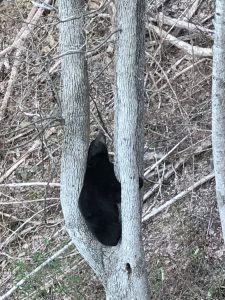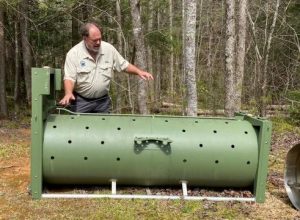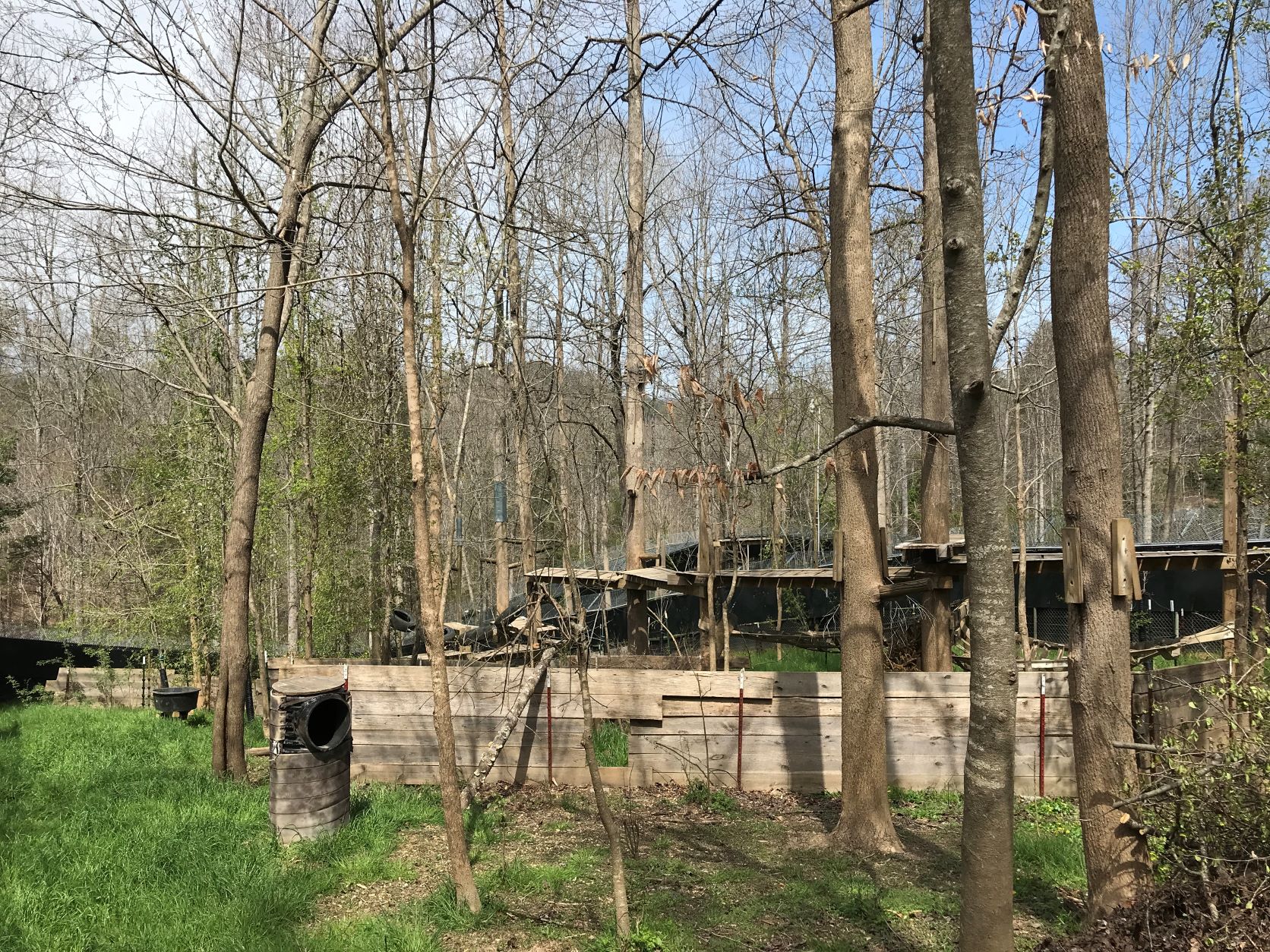Third in a series by White River Steward Grace van Kan. In part 2, Grace described the “bear necessities” of black bears, as imparted by biologist David Whitehead. The story continues…
Much to our surprise, David brought us to the Appalachian Bear Rescue facility for a tour. We were allowed to visit because there were no bears being rehabilitated or housed in the facility at that time. ABR emphasizes restricting human contact with the bears to the absolute minimum.

ABR may assist in responding to an overly-curious bear—that is, one who consistently wanders too near to campsites and other human facilities. Bears are “tranquilized,” not with something that will knock them out, but with a safer concoction of muscle relaxer and a dissociative. This way, there is little to no risk of a bear receiving a fatal dosage, nor hopping up too quickly and causing harm to a nearby person.
Bears will receive a full workup, conscious of what is going on around them, and be dropped off in a different area. The muscle relaxer-dissociative combo has been effective in keeping everyone safe, as well as deterring bears from reentering campsites on account of the memory of an unexpected workup.
During a workup, bears receive an identifying tattoo on the interior lower lip and a bright green ear tag. (We realized that the boar we saw, with his green ear tag, may have once visited ABR!)
The workup also involves checking bears’ weight and respiration. Then the ABR curator pulls a premolar. The premolar is a tiny tooth that is pulled to help determine the age of the bear in question. During the winter, tooth enamel grows slower. This means the tooth forms countable rings, kind of like a tree!

We toured four trailers that sit at the front of the ABR grounds. The first trailer housed the kennels, four in total, which can be partitioned to hold eight cubs at a time, or up to sixteen if absolutely necessary. Some of the cubs that come in are prenatal, and are given heated blankets, heart monitors, “fur” blankets, or beds.
The next two trailers were cold storage and dry storage for food—lots of fruit and nuts! The fourth trailer was the “release” trailer, where bears receive their workup before being released back into their natural habitat.
Another portion of the facility that David showed us was the enrichment enclosure. This area is where larger and healthier bears spend time before they are released.

ABR curators monitor bear behavior in the enrichment areas via cameras that were generously donated to the organization. This helps minimize human-bear interaction, making the reintroduction process easier for the bears.
Next up: Grace shares her best advice while in bear country. (Don’t feed the bears!) Find out more about her Great Smoky Mountains studies in our summer newsmagazine story, “River Deep, Mountain High.”

Grace van Kan
White River Steward